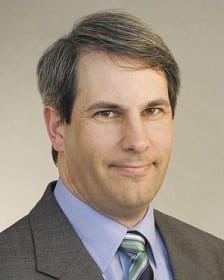Economist: Ag credit conditions improving in Midwest

David Oppedahl, a business economist with the Federal Reserve Bank of Chicago, said agricultural credit conditions continue to improve across the Fed’s 7th District, which includes Iowa, Illinois, Indiana, Michigan and Wisconsin.
“The (loan) repayment rates have been rising, and the number of loans that need to be extended has been dropping,” he said. “Those are indications that farm operations have been profitable enough to cover their operating costs. In general, there is enough cash that there hasn’t been a need to finance as much of those operating costs in the coming year.”
In the third quarter of 2011, the index of funds availability in the district reached 149, its highest level since 1987. The index represents the degree of change in funds to lend; an index below 100 indicates a decrease from the previous quarter, while above 100 indicates more funds available. The figure is calculated by taking the difference between the 52 percent of bankers in the five-state district who indicated they had more funds available to lend during the third quarter of 2011 than their banks had a year earlier, and the 3 percent who indicated fewer funds were available, Oppedahl said.
Additionally, 53 percent of bankers in the five-state district who responded expected the volume of farm loan repayments will rise over the next three to six months compared with a year ago, and just 3 percent expected that repayment rates will go down.
In the past decade, farm real estate loans have become a larger share of the overall U.S. farm loan portfolio, according to the American Bankers Association Farm Bank Performance Review. In 2001, approximately 42 percent of farm loans held by farm banks were farmland loans, as opposed to operating loans. As of the end of 2010, slightly more than 51 percent of farm loans were to finance farm real estate.
Nonperforming farmland loans at farm banks increased by 25.6 percent in 2010 to $408 million, greatly exceeding the prior cyclical peak of $172 million in nonperforming loans in 2003. Though the amount of nonperforming loans continued to grow, the rate of increase slowed from a more than 80 percent jump a year earlier.











